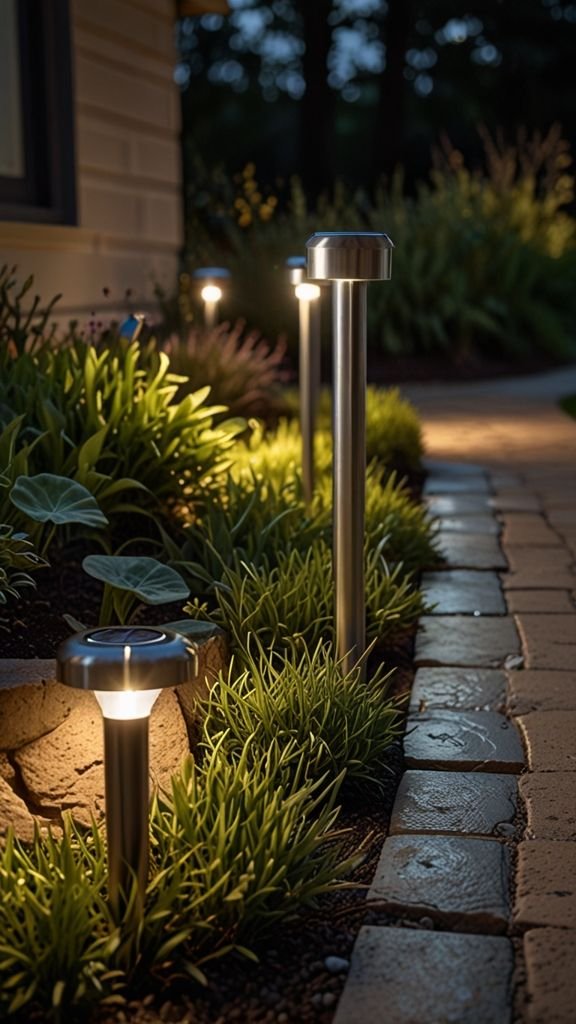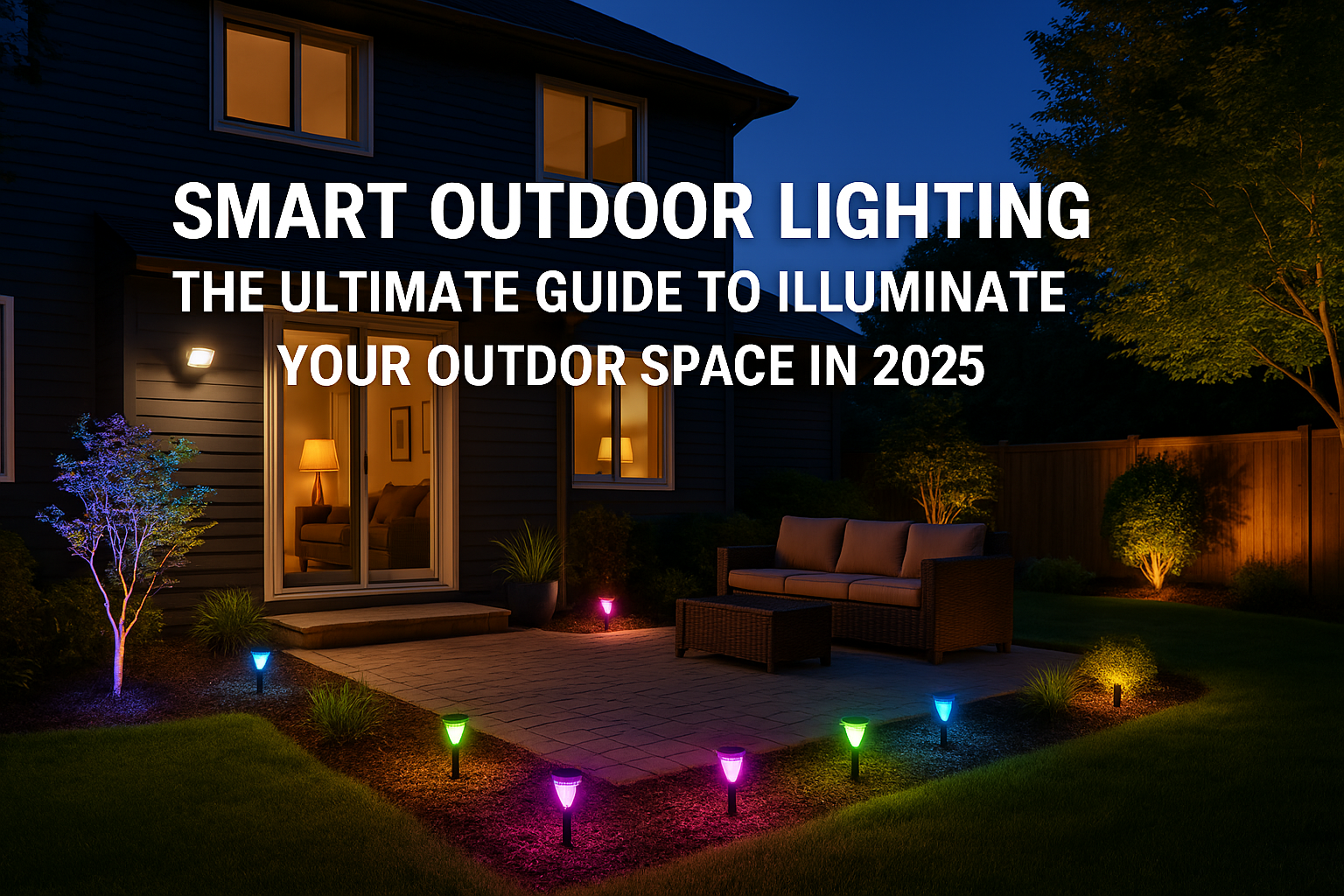

Imagine transforming your garden into a connected, eco-friendly environment where lighting and automation work seamlessly with nature. With solar-powered smart sensors, you can harness the power of the sun to create a beautifully illuminated, energy-efficient, and sustainable outdoor space.
This guide will teach you everything you need to know about solar-powered smart sensors, from how they work to installation, integration, and practical tips. Whether you’re a homeowner or tech enthusiast, this article will ensure your garden is ready for the future.
Benefits of Using Solar-Powered Smart Sensors in Your Garden
Solar-powered smart sensors offer a range of benefits that make them a fantastic choice for outdoor lighting and smart garden automation.
1. Energy Efficiency
These sensors use solar panels to absorb sunlight during the day, converting it into electricity. By tapping into renewable energy, they reduce dependency on the grid and minimize energy usage.
2. Cost Savings
Since solar-powered sensors run on sunlight, they eliminate recurring electricity costs for outdoor lighting. Over time, these devices pay for themselves, especially in regions with consistent sunny weather.
3. Easy Installation
No wiring, no hassle! Solar-powered sensors are designed for effortless setup. Simply mount them in the optimal spot, and you’re good to go.
4. Sustainability
Eco-friendly outdoor lighting is a growing trend for those who want to reduce their carbon footprint. Solar-powered systems use clean, renewable energy, contributing to a more sustainable future.
5. Versatile Design and Features
From motion-detection floodlights to dim ambient garden lights, solar-powered smart sensors come in a variety of styles to meet your garden’s needs. Many models include weatherproof designs for durability year-round.
How Do Solar-Powered Smart Sensors Work?
Understanding how these devices operate helps you maximize their potential. Here’s a breakdown of three core components:
1. Solar Charging Mechanism
Each sensor is equipped with solar panels that capture sunlight. This energy is stored in built-in rechargeable batteries, which power the sensors and lights after sundown.
2. Motion and Ambient Light Detection
Many solar-powered sensors feature motion detection and ambient light sensors, which allow them to activate only when needed. For example, a solar motion sensor light may turn on when movement is detected or glow brighter as the sky darkens.
3. Smart Automation
Integrate these sensors with smart home ecosystems (like Alexa, Google Home, or Apple HomeKit) to automate and control your garden lighting remotely. Voice commands to “turn on garden lights” make managing outdoor lighting seamless.
Installation Tips for Solar-Powered Smart Sensors
Installing solar-powered smart sensors is straightforward, but proper placement ensures optimal performance.
Best Spots for Solar Exposure
Place the sensors where they can receive direct sunlight for most of the day. Avoid shaded areas caused by tall trees, walls, or buildings that can block sunlight absorption.
Optimal Angles and Placement
Tilt the solar panels at an angle that maximizes exposure based on your region’s latitude. Additionally, position the sensors to cover key areas, such as pathways, entries, and garden focal points.
Safety Considerations
- Secure the sensors tightly to avoid damage from wind or accidental bumps.
- Use weatherproof models to ensure durability in rain, snow, or extreme heat.
- Avoid placing lights at eye level to prevent glare.
Pro Tip: Some models feature detachable solar panels, allowing you to place the panels in sunnier locations while keeping the sensor in a specific area.
Connecting Solar-Powered Sensors to Smart Hubs
One of the biggest advantages of smart garden sensors is their ability to integrate with your smart home system. Here’s how to set it up.
Alexa and Google Home Integration
Many solar lighting systems are compatible with voice assistants like Alexa or Google Home. To connect them, follow these steps:
- Install the manufacturer’s app on your smartphone.
- Pair the sensors with the app via Bluetooth or Wi-Fi.
- Sync the app with your voice assistant to create routines, such as “turn on garden lights after sunset.”
Using Apple HomeKit
For Apple ecosystem users, ensure the sensors are HomeKit-compatible. Follow similar setup steps, then control your lighting from the Home app on your iPhone or iPad.
Smart Automation Tips
- Set schedules for lights to turn on and off automatically.
- Group multiple sensors under a single routine for synchronized lighting across your garden.
- Receive motion-detection notifications on your smartphone for added security.
Recommended Solar Smart Sensor Models for Gardens
Not sure where to start? Here are some top-rated solar-powered smart lights and sensors perfect for gardens:
- Ring Solar Floodlight – Features motion detection, voice assistant integration, and a bright, wide beam ideal for large areas.
- Philips Hue Lily Outdoor Spotlight – A stylish and versatile smart spotlight compatible with all major smart hubs.
- Litom Solar Landscape Lights – Affordable, durable, and perfect for enhancing pathways or highlighting garden features.
- Lutron Aurora Dimmer with Solar Adapter – For those who value dimming control and advanced customization.
Prioritize models with weatherproofing and long-lasting batteries, as these contribute to better performance and longevity.
Common Mistakes to Avoid
Maximize your investment in solar-powered smart sensors by steering clear of these pitfalls.
- Placing Sensors in Shaded Areas
Without sufficient sun exposure, the solar panels won’t generate enough energy to power the sensors through the night.
- Ignoring Battery Maintenance
Some models allow for battery replacements. Keep batteries fresh to maintain peak performance.
- Overloading Smart Hubs
If you’re managing too many devices via your Alexa or Google Home ecosystem, ensure your smart hub can handle the load seamlessly.
- Incorrect Positioning
Angle your sensors to avoid blind spots or glare while ensuring they cover the most critical areas of your garden.
- Skipping Product Manuals
Each model has unique features. Be sure to review the manual for specific tips and recommendations.
FAQs About Solar-Powered Smart Sensors
Here are answers to the most common questions about these devices:
1. Do solar-powered smart sensors work on cloudy days?
Yes, most models charge even in indirect sunlight, though they may operate for shorter durations after overcast days.
2. How long do solar-powered lights stay on at night?
This depends on the battery capacity and sunlight received during the day. Most lights last 6-10 hours on a full charge.
3. Can I connect solar-powered sensors to Alexa or Google Home?
Absolutely! Many models are designed for seamless integration with popular voice assistants.
4. Are solar smart sensors weatherproof?
Yes, most garden models are built to withstand rain, snow, and extreme temperatures. Always check for an IP65 or IP67 rating.
5. Where should I place my solar-powered garden sensors for best performance?
Install them in spots that receive full sun, avoiding shaded areas. For motion sensors, aim for key entry points or high-traffic areas.
Light Up Your Garden the Smart Way
Integrating solar-powered smart sensors into your garden is a simple yet powerful way to enhance your outdoor space. They combine energy efficiency, convenience, and sustainability while seamlessly integrating with your smart home systems.
